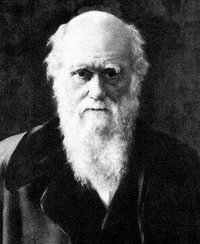Login form
Charles Darwin
 Charles Darwin had no idea when he set off on a sea voyage to explore South America in the 1830s that he would set off a controversy that continues today. Darwin studied animals in isolated places. He thought that differences he saw in similar species (kinds) of animals meant that the animals had evolved, or changed over time. His important idea is called the theory of evolution by natural selection.
Charles Darwin had no idea when he set off on a sea voyage to explore South America in the 1830s that he would set off a controversy that continues today. Darwin studied animals in isolated places. He thought that differences he saw in similar species (kinds) of animals meant that the animals had evolved, or changed over time. His important idea is called the theory of evolution by natural selection.
WHAT DARWIN OBSERVED
Charles Robert Darwin was born in Shrewsbury, England, on February 12, 1809. He came from a wealthy family and never had to work. He studied medicine and theology. In 1831, he had the chance to go on a scientific expedition. He sailed as a volunteer scientist aboard the HMS Beagle.
Everywhere the Beagle stopped, Darwin made observations of plants and animals. In the Galápagos Islands, Darwin noted that each island had its own form of tortoise, mockingbird, and finch. Each species on each island was slightly different. Darwin wondered if there were links between the similar species.
WHAT DARWIN DECIDED
For the next 20 years Darwin thought about what his observations might mean. He decided that the young of any species must compete for food in order to survive. Those with traits best suited to survival would grow up and reproduce offspring with those traits. Eventually, a new species would evolve. Darwin also thought that all species were descended from common ancestors. In 1859, he wrote a book called On the Origin of Species.
Many scientists did not believe his theory until modern genetics—the study of inherited traits—began in the early 1900s. Most attacks on Darwin’s ideas came from religious opponents. They thought that evolution denied the divine creation of human beings and made people and animals equal.
Darwin spent the rest of his life writing about his theory. He died on April 19, 1882.
Source: Microsoft ® Encarta

